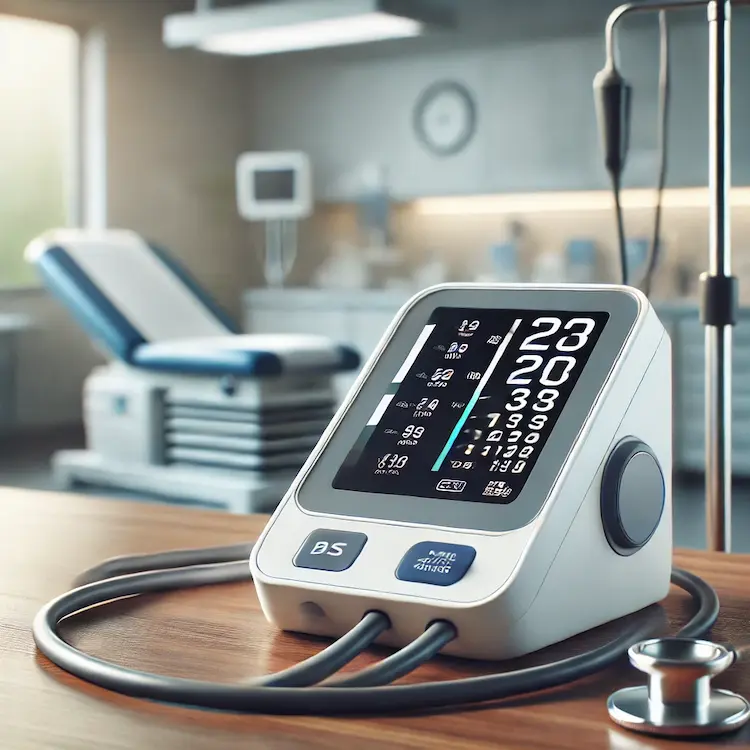Blood pressure measurement is a crucial aspect of health monitoring, providing insights into cardiovascular health and helping diagnose hypertension and other medical conditions. The sphygmomanometer, commonly referred to as a blood pressure monitor, is the primary tool used to measure blood pressure accurately. This article delves into the basics of sphygmomanometers, their types, their importance, and how they contribute to medical diagnostics.
What is a Sphygmomanometer?
A sphygmomanometer is a medical instrument designed to measure blood pressure. It consists of:
- An inflatable cuff that wraps around the upper arm or wrist.
- A pressure gauge (manometer) that indicates pressure readings.
- A bulb and valve system (in manual models) to inflate and release air from the cuff.
The device measures two key values:
- Systolic pressure (top number): The pressure in arteries when the heart beats.
- Diastolic pressure (bottom number): The pressure in arteries when the heart rests between beats.

Importance of Blood Pressure Measurement
Regular blood pressure monitoring is essential for detecting and managing hypertension, a leading risk factor for heart disease and stroke. High blood pressure often presents no symptoms but can lead to severe complications if left untreated.
Health and Societal Impacts
- Prevention of Heart Diseases: High blood pressure contributes to heart attacks, strokes, and kidney failure. Monitoring allows for early intervention.
- Public Health Monitoring: Governments and health organizations track hypertension trends to implement preventive strategies.
- Reduced Healthcare Costs: Early detection of hypertension reduces medical expenses related to complications like organ damage.
Types of Sphygmomanometers
Sphygmomanometers are categorized based on their measurement techniques and usability.
| Type |
Features |
Advantages |
Disadvantages |
| Mercury Sphygmomanometer |
Uses a mercury column for precise measurement |
Highly accurate, gold standard for BP measurement |
Bulky, risk of mercury exposure |
| Aneroid Sphygmomanometer |
Uses a mechanical dial gauge |
Portable, mercury-free, affordable |
Requires frequent calibration, prone to user error |
| Digital (Oscillometric) Sphygmomanometer |
Uses electronic sensors and displays readings digitally |
Easy to use, ideal for home monitoring, automatic inflation |
Less accurate in irregular heartbeats, battery-dependent |
| Wrist Blood Pressure Monitor |
Wraps around the wrist instead of the upper arm |
Compact, convenient for travel |
Less reliable, affected by wrist positioning |
| Ambulatory Blood Pressure Monitor (ABPM) |
Worn for 24-hour monitoring, records BP at intervals |
Tracks BP variations, helps diagnose white-coat hypertension |
Expensive, used mainly in clinical settings |
Comparison of Blood Pressure Measurement Methods
Manual vs. Digital Blood Pressure Monitors
Manual (mercury or aneroid) sphygmomanometers require professional training for accurate use, while digital monitors offer convenience but may lack precision in specific conditions like arrhythmia.
Upper Arm vs. Wrist Monitors
Upper arm monitors provide more accurate readings since the brachial artery is a reliable measurement site. Wrist monitors, though portable, are sensitive to hand positioning and movement, often leading to inconsistent readings.
Home Monitoring vs. Clinical Measurement
Home monitoring is essential for individuals managing hypertension, reducing white-coat syndrome effects. However, clinical measurements ensure standardized techniques and more accurate assessments.
How to Measure Blood Pressure Correctly
Step-by-Step Guide
- Choose the Right Cuff Size: A cuff too small or too large can result in inaccurate readings.
- Sit in a Quiet, Relaxed Position: Avoid talking, moving, or consuming caffeine 30 minutes before measurement.
- Place the Cuff Properly: Position it on the upper arm, ensuring it is snug but not too tight.
- Rest Your Arm on a Surface: Keep it at heart level.
- Take Multiple Readings: Measure at least twice, waiting 1-2 minutes between readings.
- Record the Readings: Keep a log to monitor trends over time.
Common Errors in Blood Pressure Measurement
- Using the wrong cuff size
- Placing the cuff over clothing
- Incorrect arm positioning
- Talking or moving during measurement
- Measuring after caffeine or exercise
Choosing the Right Sphygmomanometer
Selecting a blood pressure monitor depends on several factors:
- For healthcare professionals: Mercury or aneroid sphygmomanometers are preferred for accuracy.
- For home use: Digital upper arm monitors are recommended for ease of use.
- For frequent monitoring: Ambulatory BP monitors provide 24-hour readings for detailed analysis.
Future Trends in Blood Pressure Monitoring
With advancements in medical technology, blood pressure monitoring is becoming more accessible and user-friendly.
- Wearable Blood Pressure Monitors: Smartwatches and fitness trackers now integrate BP monitoring.
- AI-Powered Devices: AI-based interpretation enhances accuracy and detects patterns.
- Remote Monitoring Solutions: Telehealth platforms allow doctors to track patient BP remotely.
Conclusion
Sphygmomanometers play a critical role in diagnosing and managing blood pressure-related conditions. Understanding the different types, proper usage techniques, and common errors ensures accurate and effective monitoring. Whether for personal use or medical practice, selecting the right BP monitor contributes significantly to cardiovascular health management.
Key Takeaways
- Blood pressure measurement is vital for detecting and managing hypertension.
- Different types of sphygmomanometers offer varying levels of accuracy and usability.
- Proper cuff placement and technique are crucial for accurate readings.
- Home monitoring can help track trends but should be complemented by clinical checkups.
- Future innovations in blood pressure monitoring include AI integration and wearable technology.
Actionable Recommendations
- Check your blood pressure regularly, especially if you have risk factors for hypertension.
- Use a well-calibrated, reliable sphygmomanometer for home monitoring.
- Follow proper measurement techniques to ensure accuracy.
- Consult a doctor if readings consistently exceed normal ranges.
- Stay updated on new BP monitoring technologies to improve tracking and management.
